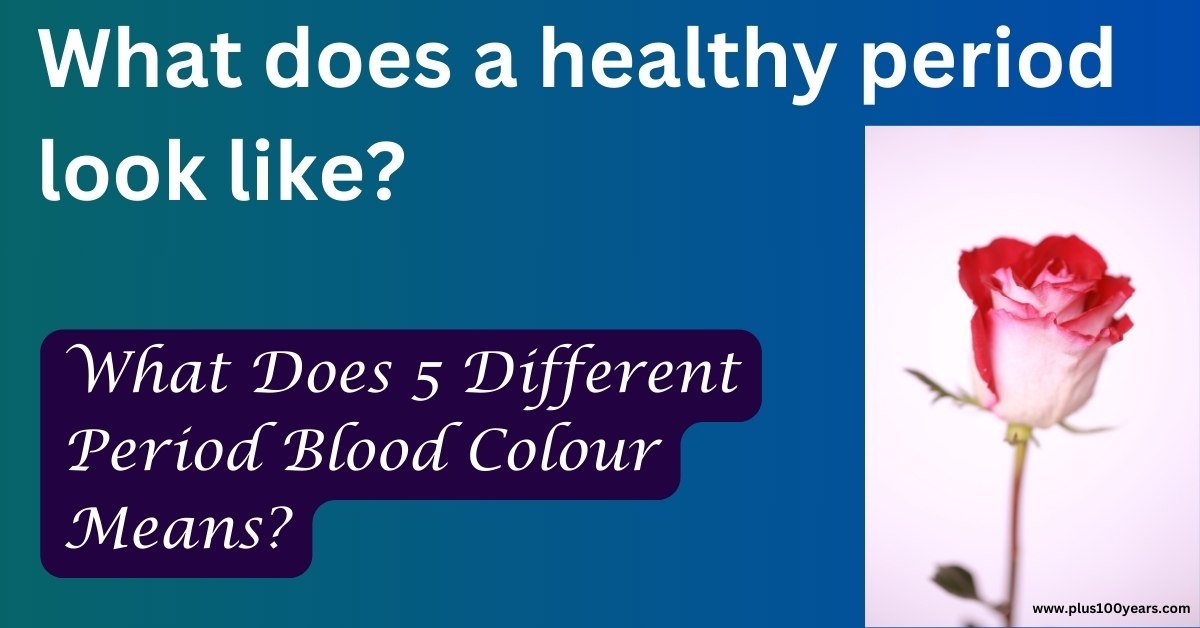What Does Different Period Blood Colour Means?
The monthly visit from Aunt Flo brings us a whole rollercoaster of emotions and pain. And if that wasn’t enough, there is a difference in period blood color. Now, you might be used to seeing red during this time, but have you ever wondered what different period blood colors mean?
During your monthly check-in, you may notice a departure from the usual red hue. It could be a variation of pink, brown, or even an enigmatic shade that defies description. Before succumbing to worry, remember to take a deep breath.
Period blood has a knack for transforming its color, akin to a mood ring, and there’s usually no need to hit the panic button.
Well, it’s like your body’s way of sending you messages in its unique language. These colors can give you insight into your health and where you are in your menstrual cycle. But let’s understand why your period blood color is different.
Why Does Period Blood Have Different Colors?
Periods aren’t the most attractive subject, but they’re an inevitable part of life, right? But when it appears in a hue other than red, this happens:
“Why is my period blood black and thick?”When your mind triggers the alarm, you experience a whirlwind of thoughts. However, there is usually no need to lose sleep over it.
So, if you notice a different tint, it’s your body’s way of saying, “Hey, things are cool – just a little change of scenery.” It might be black, pink, brown, or any other color–if it happens once, relax. If this occurs frequently, you should see a doctor.
Nonetheless, are you aware that various hues represent different things? This is a handbook that will teach you all you need to know about different period blood colors. So, let us begin to alleviate your worry.
Different Colors of Blood During Menstruation
1. Black
“Why is my period blood black?” – Are these thoughts running on a loop? Well, take a deep breath first. Just your body shedding some uterine tissue.
Black period blood is like your body’s way of doing a little cleanup. It’s usually the old blood taking an exit. It’s just a mix of old blood and tissue that needed an extra day to make its grand exit. No need to overthink it; your body’s just doing its thing.
2. Brown
First off, brown period blood is not the menstrual version of a red alert. When your blood stays in your uterus for a bit longer, it starts to oxidize. Now, let’s talk about consistency because you might notice it’s not as liquid as your regular flow.
That thicker texture is simply your body shedding old uterine tissue. Sure, it might make you raise an eyebrow or two, but understanding the why behind the brown hue can bring some peace of mind.
3. Bright Red
The reason behind this period of blood color is the oxygen content of the blood. Bright red means that the blood has a good supply of oxygen, and it’s making a quick exit from your body. It’s like your body’s version of hitting the refresh button.
The color is a result of the oxygen reacting with the iron in the blood, creating that vibrant red shade.
Bright red blood is usually more fluid than its darker counterparts. Why? Because it’s fresh and on the move, making its way out of your body with a certain level of urgency.
4. Dark Red
A pregnant lady does not have periods. Periods exist to eliminate unclean and unneeded substances from the body.
If a woman goes without menstruating for nine months, she will accumulate a surplus of blood.
Lochia, also known as postpartum bleeding, refers to the discharge of dark red blood from the vagina that takes place after childbirth.
It is a natural process through which the body eliminates excess blood and tissue from the uterus. Lochia poses no harm and is completely normal.
Lochia lasts varying amounts of time, and not all women experience it after delivering a child.
5. Pink
First up, let’s talk about the impact of hormonal imbalance during periods that are caused by to consumption of birth control.
If you’re on the pill or using any hormonal contraception, it can throw a bit of a pink shade in your period.
How? Well, these contraceptives often lower estrogen levels in your body. And when estrogen takes a dip, your flow might follow suit, sporting a lighter shade, sometimes leaning towards pink.
Even sexual intercourse can be the reason, the act itself can introduce a hint of pink period blood color. How does that happen?
During sex, minor tears can occur in the vagina or cervix. In such cases, the blood from these small tears may combine with your regular vaginal fluids, leading to a discharge that appears pinkish.
6. Orange
Orange? Weird, right? Now, one common reason for this orangish twist is an infection, like bacterial vaginosis or trichomoniasis.
Before you hit the panic button, check for other telltale signs. Are you experiencing vaginal itching, discomfort, or perhaps a not-so-pleasant odor? These can be additional clues that your body might be dealing with an infection.
Now, it’s crucial to understand that orange blood doesn’t always scream infection. But it’s a bit like your body waving a caution flag. It is a good idea to give you a call to your gynecologist.
7. Gray
Let’s chat about a color that might make you go “hmm” during your monthly check-in – gray discharge.
Before your thoughts begin to spiral with the worst possible outcomes, pause for a moment. Bacterial vaginosis is a condition that occurs when the equilibrium between beneficial and less-friendly bacteria in your vaginal area becomes disrupted.
If you are encountering itchiness in and around the vagina, a noticeable odor reminiscent of fish (admittedly not the most pleasant), or a burning sensation and discomfort while urinating – all accompanied by gray discharge – it is as if your body is sending a clear signal that reads, “Seek medical attention!”
Conclusion
So, there you have it – the rainbow of period blood colors, each telling its own story. From bright red signaling a healthy flow to gray waving a potential concern flag, your body communicates in its unique way.
If you ever find yourself wondering, “Why is my period blood black and thick?” or scratching your head at the first-day surprise of a darker shade, remember, it’s your body’s language.
If those cramps are giving you a hard time, here’s a tip: check out Welme’s period pain relief device. It might just be the answer to turn down the discomfort and let you own your vibrant, pain-free rhythm. You got this!
Know More about Different Period Blood Color
What are unhealthy period blood colors?
Unhealthy period blood colors, like gray or orange, may signal infections. Pay attention if your blood consistently deviates from the usual bright red during your period. If it’s black and thick on the first day, it’s likely older blood taking its time to exit.
What does the color of blood indicate?
The color of blood indicates the oxygen content and its age. Bright red suggests fresh, oxygen-rich blood, while darker hues may mean older blood. Understanding these shades can give you insights into your menstrual health.
What does a healthy period look like?
A healthy period looks consistent – a steady flow of bright red blood without strong odors or discomfort.
If you notice unusual colors persisting, consult your healthcare pro. Your body communicates uniquely, and staying aware helps you navigate your menstrual rhythm. Your health journey is yours to navigate.




